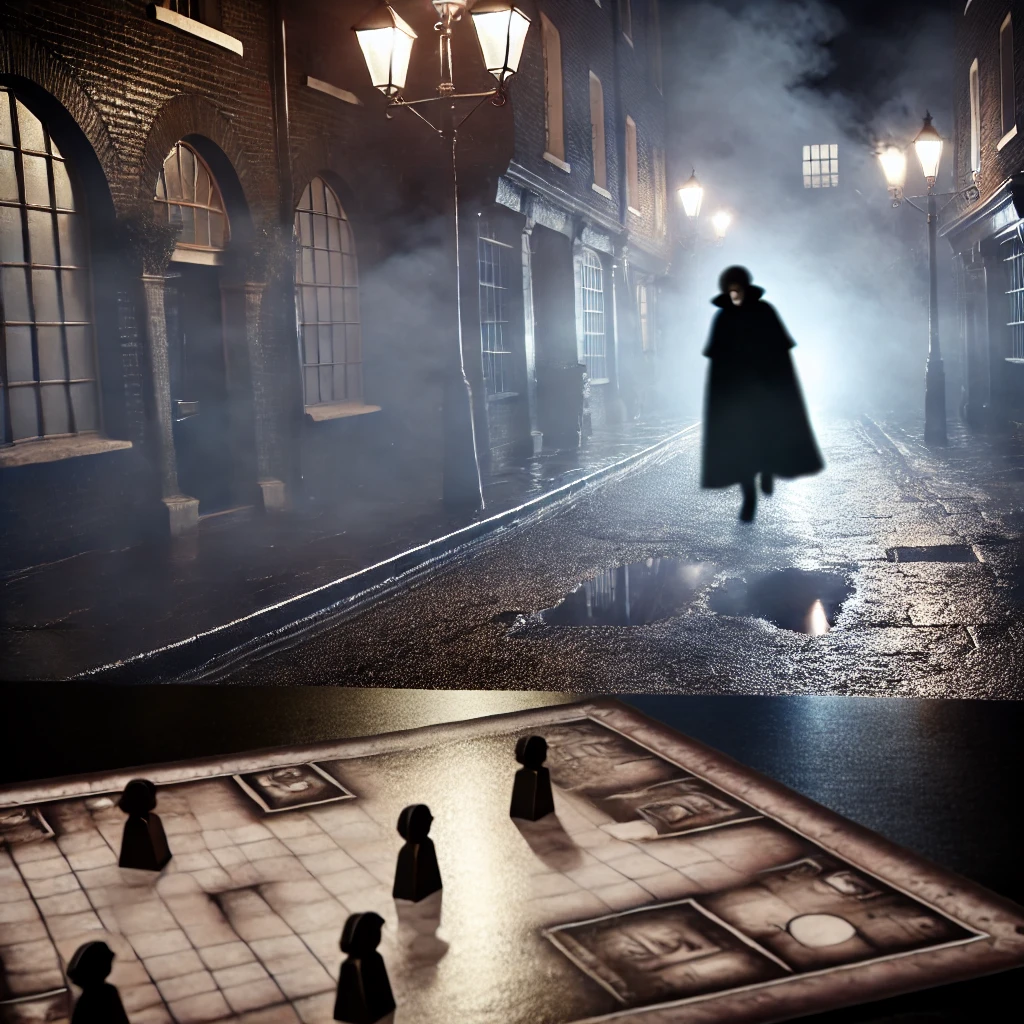Footsteps in the Dark: The Chilling Appeal of Hidden Movement Games
Somewhere in the shadows, something is hunting you—or perhaps it’s you who is doing the hunting. Hidden movement games are a dance between predator and prey, where every move is shrouded in secrecy. It’s a genre that taps into primal instincts, offering a sense of pursuit or escape with every flick of the pen and every inch of the board.
At its core, hidden movement games are about tension. Players navigate the game board while one (or more) characters move in secret, tracking their steps behind a screen or on a separate map. Games like Scotland Yard (1983) were among the first to explore this mechanic, but it was Letters from Whitechapel (2011) that took the concept to a darker level. As Jack the Ripper, one player stalks the foggy streets of London, leaving behind a trail of bodies while the police close in, trying to predict his every move.
The thrill of these games comes from that sense of impending doom. Each decision could mean life or death, and for the hidden player, the stakes feel even higher. The weight of every secret movement, the carefully planned escape routes, and the cat-and-mouse nature of it all create an atmosphere of dread and exhilaration.
For the hidden player, it’s all about deception. Every move must be calculated, and every path must be chosen with care. In Fury of Dracula, the titular vampire roams across Europe, leaving clues as to his whereabouts while hunters try to corner him. Dracula’s movements are hidden, and the tension builds as the hunters get closer until a final confrontation determines the fate of the world.
The appeal here is twofold: for the hidden player, there’s the satisfaction of outsmarting the others, slipping away just when they think they have you. For the hunters, it’s the slow but methodical closing of the net, piecing together the clues, and tracking your quarry step by step. It’s a duel of wits and nerve, and only one side can come out victorious.
Hidden movement games are particularly effective at building atmosphere. In Specter Ops, one player is an agent infiltrating a futuristic facility, while the others are hunters trying to track them down. The game oozes tension, with every turn feeling like the moment before a storm breaks. Each clue uncovered brings the hunters closer, but each step could be the one that reveals your location.
In many of these games, the setting itself becomes a character. The dark streets of Victorian London, the sprawling halls of Dracula’s castle, or the shadowy corners of a high-tech facility all add layers of suspense to the experience. It’s not just a game of movement, it’s a game of storytelling, where the setting amplifies the tension with every step taken in the dark.
Hidden movement games tap into something primal. They recreate the fear of being chased or the thrill of stalking unseen, blending strategy with raw, visceral tension. We love these games because they turn the board into a battlefield of secrets, where victory belongs to the one who can keep their wits sharp and their movements even sharper.
In the end, the appeal of hidden movement is simple: we all love a good chase. Whether you’re the one hiding in the shadows or the one closing in for the kill, these games offer a unique kind of thrill, one that lingers long after the game is over.

